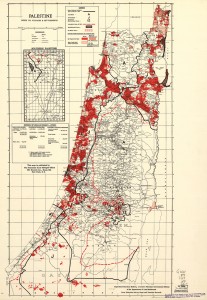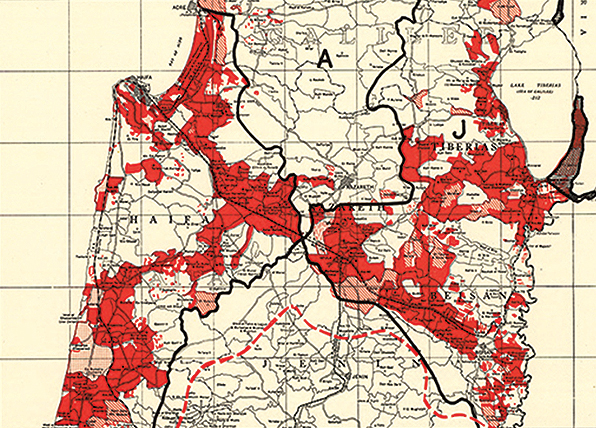Jews have lived in Palestine throughout centuries in relative peace with their neighbors. Larger-scale immigration into the region began in the second half of the 19th century, with Peta Tikva being the first Zionist colony established in Palestine in 1878. The following years showed wavering attempts by the Ottoman government to limit foreign Jewish businessmen and pilgrims from settling in Palestine, at times only allowing them to visit, while foreign governments pressured the Ottoman government to allow for their immigration. Newly-founded Jewish organizations backed land purchase with the support of foreign wealthy Jewish businessmen and nobility, such as Baron Edmund the Rothschild and the German Jewish Baron Maurice de Hirsch (Jewish Colonization Association, JCA). In 1897, the First Zionist Congress in Basel, Switzerland, issued the Basel program on the colonization of Palestine and the establishment of the World Zionist Organization (WZO). Initial exploration of the region prompted a delegation to return with the message: “The bride is beautiful, but she is married to another man.” In the early 1900s, pressured by European powers, the Ottoman government allowed foreign Jews to purchase land in northern Palestine. The Jewish National Fund (JNF) was established as the land acquisition organ of the WZO and decided that the land it acquired was inalienably Jewish and exclusively Jewish labor was to be employed on it, which caused great distress among Palestinian administration, parliamentarians, and citizens.

During WWI, while the Ottoman government sided with the German forces, correspondence between Sharif Hussein of Mecca and Sir Henry McMahon, British high commissioner in Egypt, was understood by Arabs as ensuring post-war independence and unity for the Arab provinces of the Ottoman Empire, among them Palestine. The secret Sykes-Picot Agreement (1916), the Balfour Declaration (1917), and finally the Paris Peace Conference (1919) destroyed such hopes. The first Palestinian National Congress convened in Jerusalem demanding independence, but the League of Nations approved British Mandate administration of Palestine without consent of the Palestinians. In 1935, leaders of Palestinian political parties submitted a joint memorandum to the British High Commissioner requesting cessation of Zionist mass immigration and land acquisition and the establishment of a government based on proportional representation. A proposal (1935) of the High Commissioner for a 28-member Legislative Council with Palestinians holding only 14 seats was accepted by Palestinians in principle, but defeated by pro-Zionist members of the British House of Commons. A revolt broke out 1936-9. The White Paper (1939) attempted to regulate transition towards independence, immigration, and protection of Palestinian land rights from Zionist acquisition, but was heavily protested by Jews and resulted in the formation of new underground militant group. After World War II, over 60,000 Zionist immigrants, 20,000 – 25,000 of whom had entered illegally, increased the Jewish population in Palestine to 31%; registered Jewish land ownership amounted to 7% of the country. Jewish narrative that claims that land purchase had been restricted to cheap since underdeveloped or infertile lands along the Mediterranean coast and in southern Galilee swamp areas, claiming also that they introduced irrigated citrus cultivation and other improved methods of agricultural production hold no, or only limited truth with the fact that Jewish colonies were generally in a better financial position than many local fellahin and generally backed by the British Mandate administration.
i. http://www.palestinelink.eu/palestine/timeline/1940-1949/


